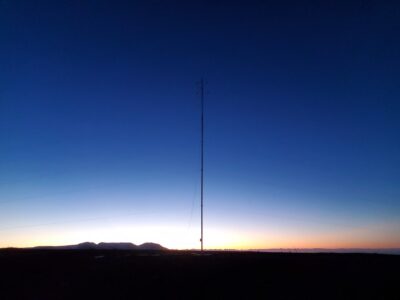In May, Treasury Americas, a division of Treasury Wine Estates (TWE), announced it would expand solar electricity generation at the Napa Valley, Paso Robles, and the Central Coast vineyards in California. The global winemaker will work with Shell Energy to increase solar energy generation to 9.2 MW.
The company will install around 13,000 panels across various properties. When complete, 14.3 million kWh per year will be used to power the vineyards cleanly. In a press release, Treasury Americas points to a new study from DNV GL, a risk management assessor, about its leadership in on-site solar generation. Treasury says it will create more than 60% of its electricity on-site, a record for an American wine company, after the completion of the project.
The company hopes to transition to 100% renewable energy by 2024, with a greater goal of hitting net-zero emissions by 2030. It has used renewable energy at its American vineyards since 2008, with the solar panel investment at Treasury America’s Berginer Vineyard. With some estates threatened by California’s wildfires in recent years, adopting more renewable energy gives TWE more security.

Photo Courtesy Treasury Americas
“We have a responsibility to be stewards of the environment and to mitigate the impact of the climate crisis on our wines and communities,” Will Drayton, director of sustainability and science for Treasury Americas, said in a statement. “The rapid transition to 100% renewable electricity will eliminate the majority of our production emissions in only a few short years.”
TWE established itself in Napa in 1876 with the opening of the Beringer Bros. winery, now under the Treasury Americas division. The wine conglomerate currently owns 10 vineyards in the Napa area, all of which follow comprehensive sustainability plans. California Green Medal Leader has recognized Treasury Americas for its commitment and support of a virtuous sustainable agenda. That includes growing grapes with minimal environmental impact and using renewable energy in business operations.
One of the most unique aspects of the expanded solar energy generation strategy is wildfire resiliency. By being independent of the California state grid, Treasury can continue to power its vineyards.
Sterling Vineyards, which closed in 2020, was damaged due to the September 2020 Glass Fire, which burned close to 68,000 acres between Napa and Sonoma Counties. It is expected to reopen later this year, fully powered under the new solar expansion.

Photo Courtesy Treasury Americas
The collaboration with Shell has been crucial. The energy giant is installing more than just solar panels at TWE’s sites. Other energy improvements like LED lighting and compressed air for cleaning to save water are being integrated.
A Shell spokesperson told “PV Magazine USA” that the solar locations would include ground mount, rooftop, and carport installations.
Shell has also supplied renewables to TWE’s Australian portfolio. According to the company, California and Australia will run on 100% renewable energy by next year.
Shell said they would consider energy storage systems, whether that be storing thermal or electricity in batteries. A number of the new solar installations may be integrated into the grapevine rows. Agrivoltaic designs will also be considered in the future.
“The work we’re doing with Treasury Americas is a perfect example of working together to figure out the right mix of solutions, which leads to achieving carbon footprint objectives,” Glenn Wright, vice president of renewables and Energy Solutions Americas for Shell, said in a statement. “I’m proud of the strong relationship that the Shell Energy and TWE teams have established, and I am looking forward to continuing that into the future.”
TWE has operations in Australia, New Zealand, California, France, and Italy. The wines are sold in 70 countries worldwide. Sustainable strategies help the company with such a global presence conserve energy and reduce carbon emissions from shipping and beverage production. Cheers to that!





